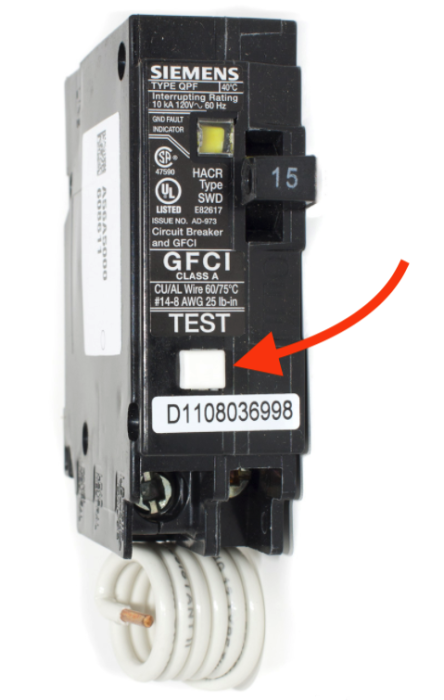GFCI-state-adoptions
What is GFCI protection?
- A special GFCI breaker or electrical outlet can sense imbalances in an electrical branch circuit and shut off power to that circuit in time to prevent a person from being shocked or electrocuted.
- A single GFCI breaker can protect all electrical devices connected to the circuit it protects.
- A single GFCI electrical outlet on a circuit can protect all the devices downstream from it.
- Installing GFCI protection is relatively inexpensive.
Modern Required Locations
For many jurisdictions, the required locations are specified by the National Electric Code (NEC).
Jurisdictional requirements can vary because the NEC is updated every 3 years, but because it's expensive, jurisdictions don't always adopt the most recent version.
All 125-volt through 250-volt receptacles installed in the locations specified in 210.8(A)(1) through (A)(11) and supplied by single-phase branch circuits rated 150 volts or less to ground shall have ground-fault circuit-interrupter protection for personnel.
- Bathrooms
- Garages and also accessory buildings that have a floor located at or below grade level not intended as habitable rooms and limited to storage areas, work areas, and areas of similar use
- Outdoors
Exception to (3): Receptacles that are not readily accessible and are supplied by a branch circuit dedicated to electric snow-melting, deicing, or pipeline and vessel heating equipment shall be permitted to be installed in accordance with 426.28 or 427.22, as applicable.
- Crawl spaces — at or below grade level
- Basements
Exception to (5): A receptacle supplying only a permanently installed fire alarm or burglar alarm system shall not be required to have ground-fault circuit-interrupter protection.Informational Note: See 760.41(B) and 760.121(B) for power supply requirements for fire alarm systems.Receptacles installed under the exception to 210.8(A)(5) shall not be considered as meeting the requirements of 210.52(G).
- Kitchens — where the receptacles are installed to serve the countertop surfaces
- Sinks — where receptacles are installed within 1.8 m (6 ft) from the top inside edge of the bowl of the sink
- Boathouses
- Bathtubs or shower stalls — where receptacles are installed within 1.8 m (6 ft) of the outside edge of the bathtub or shower stall
- Laundry areas
Exception to (1) through (3), (5) through (8), and (10): Listed locking support and mounting receptacles utilized in combination with compatible attachment fittings installed for the purpose of serving a ceiling luminaire or ceiling fan shall not be required to be ground-fault circuit-interrupter protected. If a general-purpose convenience receptacle is integral to the ceiling luminaire or ceiling fan, GFCI protection shall be provided.
- Indoor damp and wet locations
Testing Receptacle-Type GFCIs
If the "RESET" button does not pop out, the GFCI is defective and should be replaced.
Recognizing GFCI Breakers

